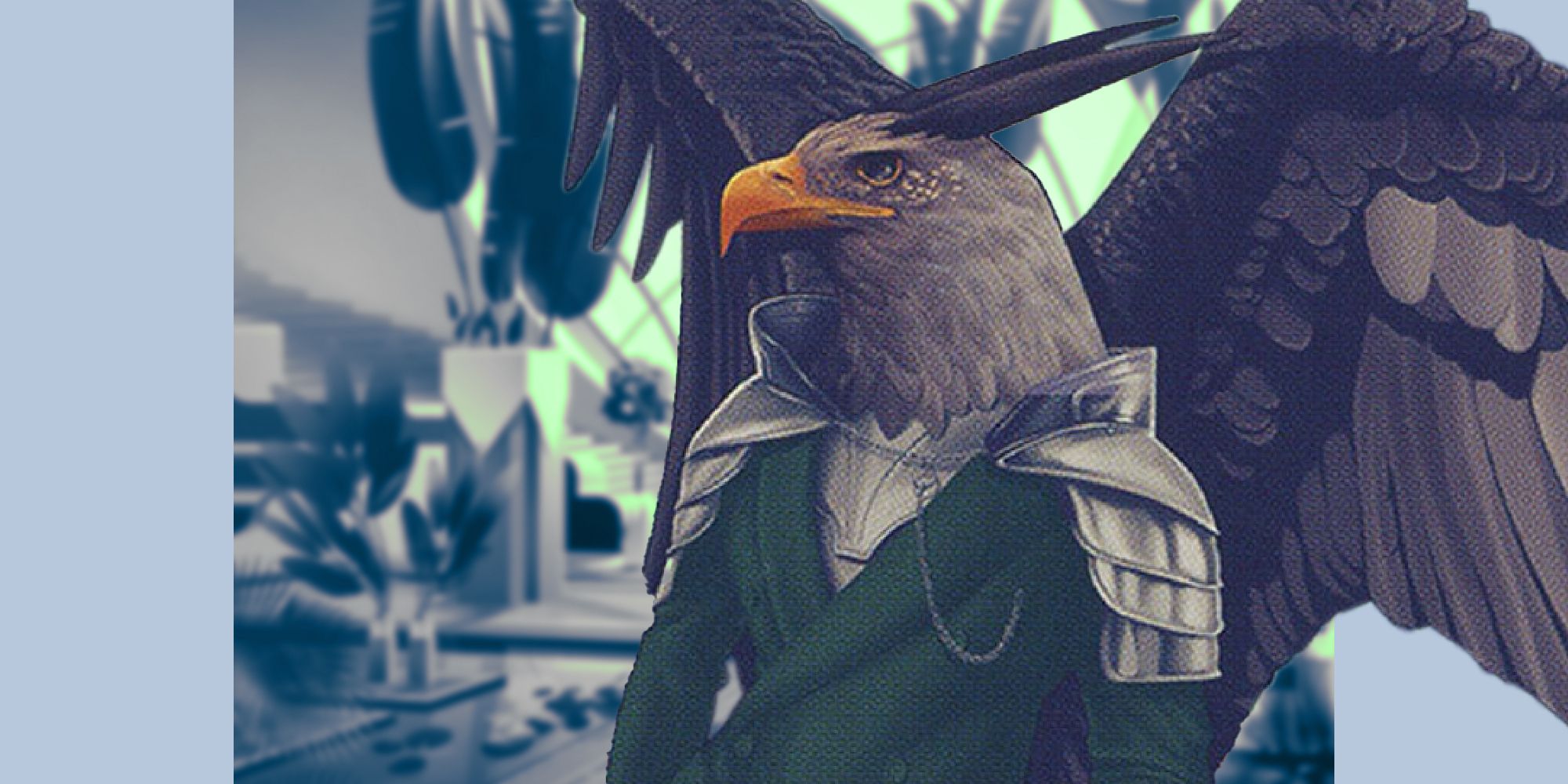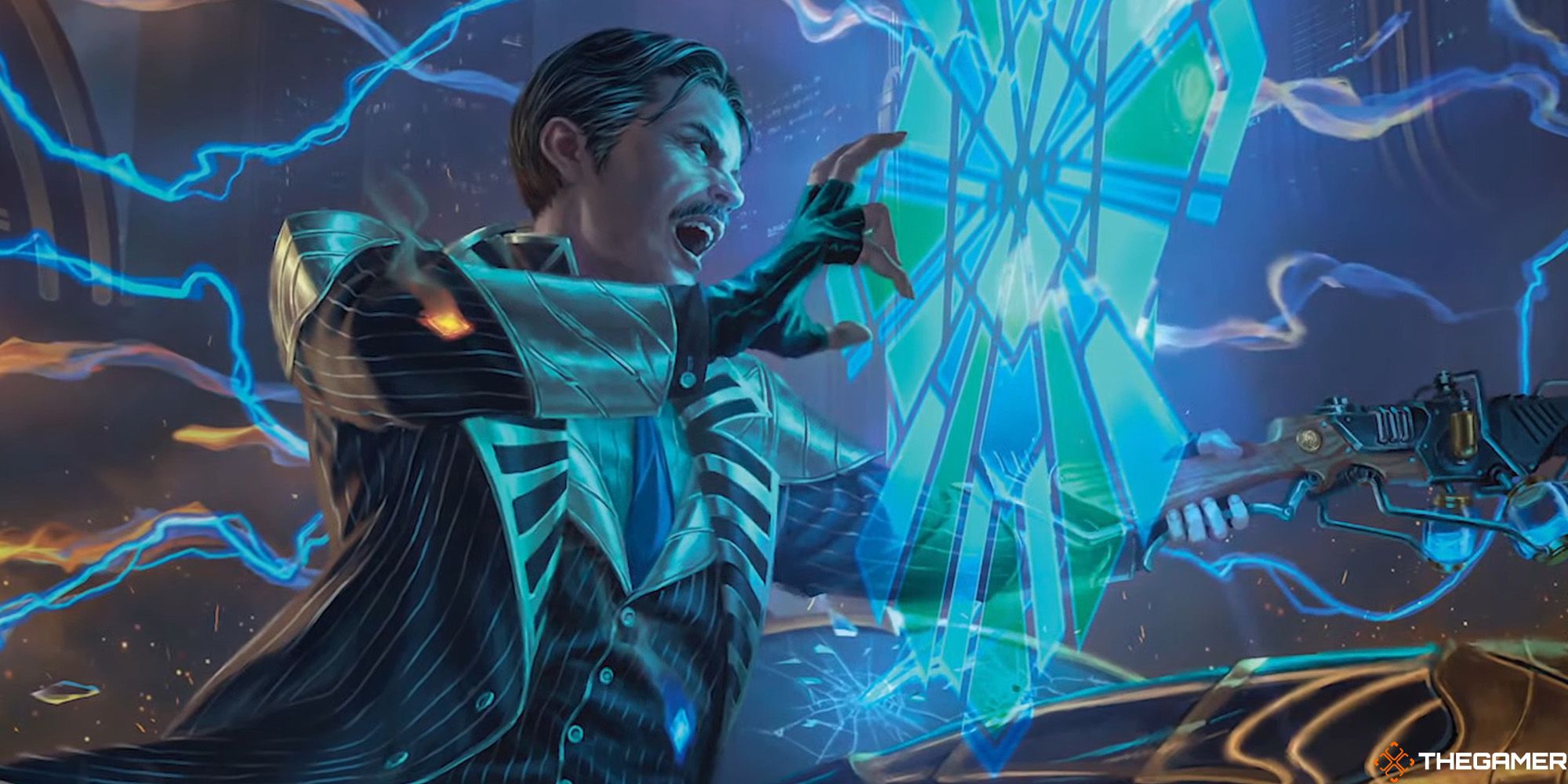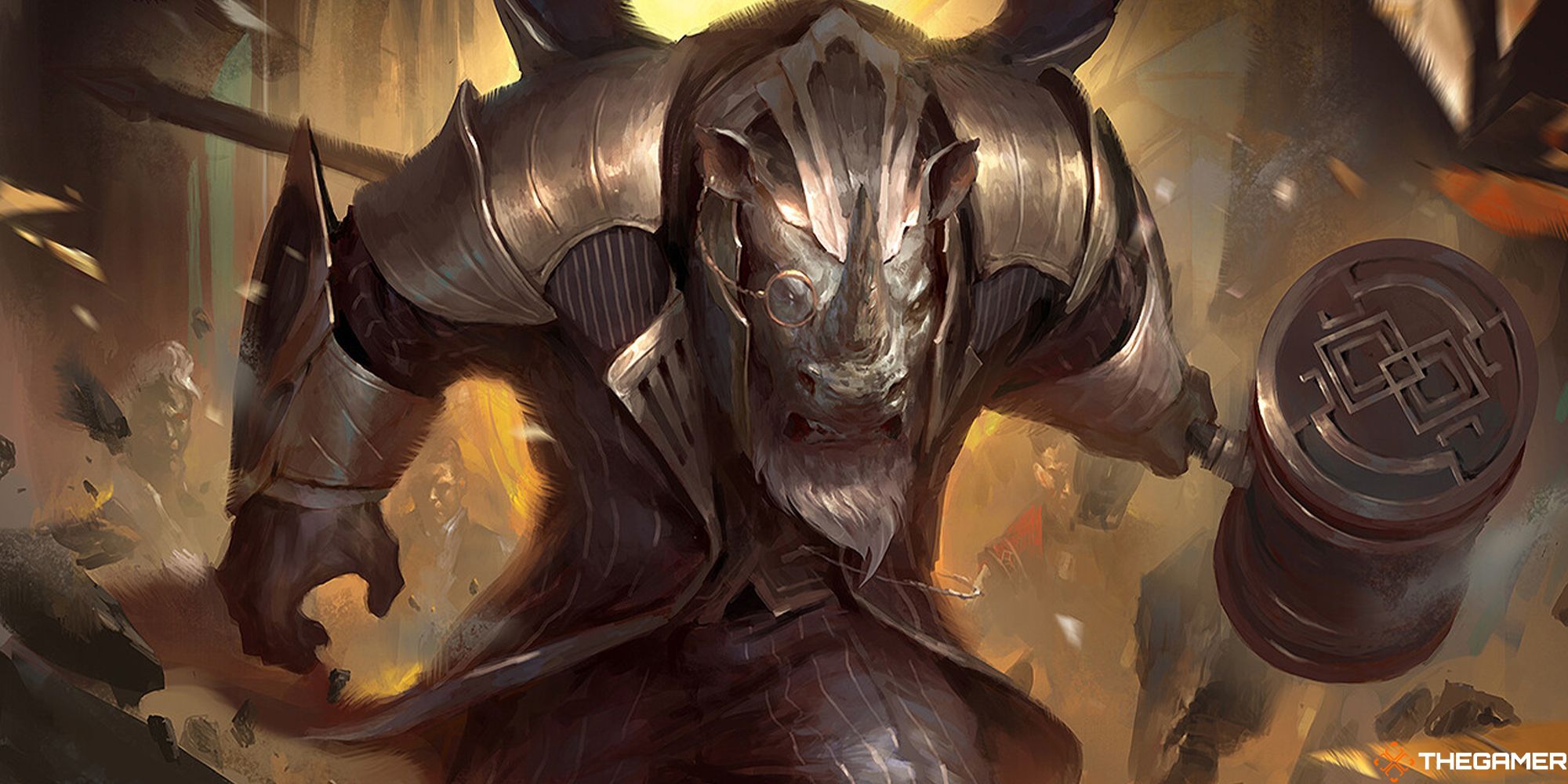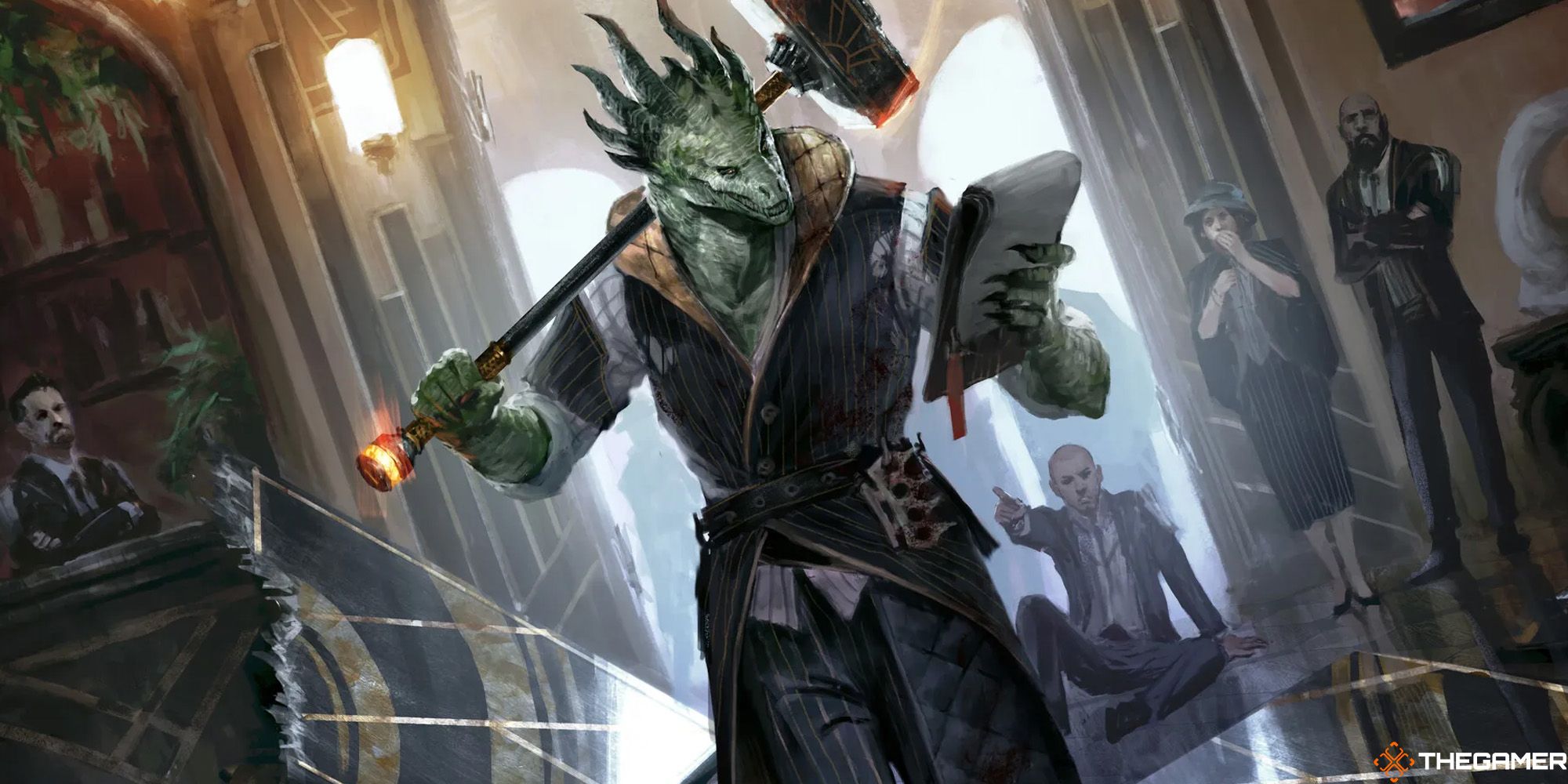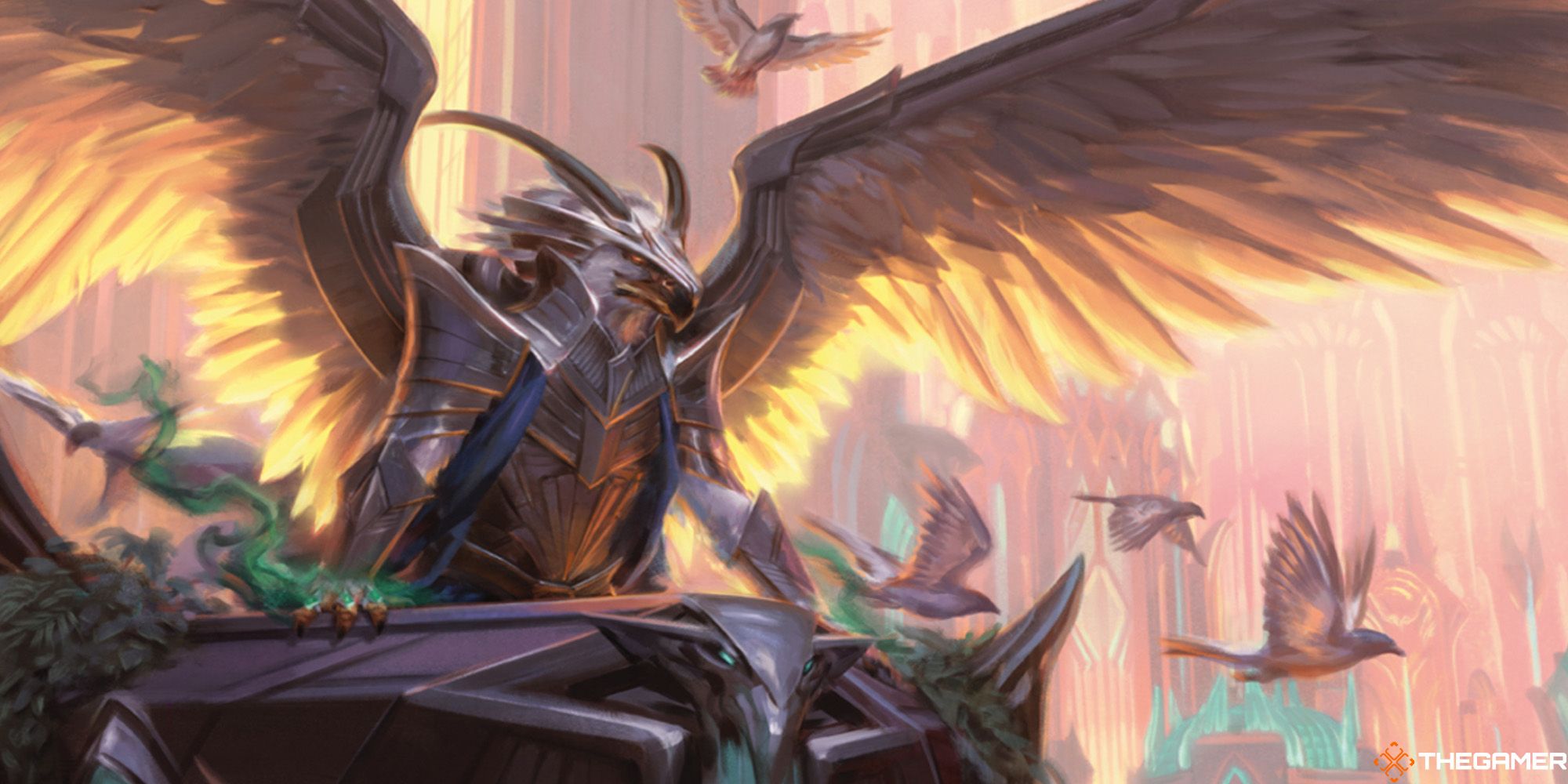Before launch, Streets of New Capenna was my most-anticipated Magic: The Gathering release of the year. I was so down for the sexy art-deco setting and its five demonic crime families vying for control. It was vastly different from the high fantasy Magic had long been rooted in, taking us to a dirty, glitzy, urban mess of a world.
Now that it’s been out for a few months, my opinion on it has tempered somewhat. It was a tough act to follow the knockout success of Kamigawa: Neon Dynasty, but what we got in New Capenna ultimately felt flat. It had all the glamour and revelry we wanted from a Great Gatsby-esque world, but it lacked something. It lacked cops.
Streets Of New Capenna is focused on the five families: the art-stealing, assassinating, aristocratic Maestros; the party animal Cabaretti, the sneaky blackmailing Obscura, the rough-and-tumble workers group The Riveteers, and the dodgy legal firm the Brokers. Except the Brokers weren’t always part of the plan.
According to head designer Mark Rosewater, the group that would become the Brokers went through a number of iterations. One of its first incarnations was as the justice system of New Capenna – the cops seeking to take down the other four families. Of course, this being New Capenna and them being cops, this group would’ve been rife with corruption. It made perfect sense: this is the group who are based in white mana, which stands for order, control, and hierarchy in Magic. We can even see it in the Brokers’ mechanic that made it to print, with shield counters letting you protect your own permanents more easily.
And yet, we never saw this cop faction make it to the final release. It was decided during New Capenna’s development to shift the Cop faction into a corrupt legal firm, and so the Brokers were born. According to Rosewater, the team were “looking at the real world and all the associations going on with the police, [and] decided to shift away from the police and towards lawyers”.
The Brokers are fine. They’re not the most aesthetically interesting of the five factions, with the best thing about them being their leader, the eagle-man Falco Spara. They lack the depth of the Riveteers’ worker revolt, or the Cabaretti taking political hostages during their never-ending parties. They’re a cleaner, primmer and more proper look at the upper echelons of New Capenna, where sharp suits and cold business take precedence over emotion or revenge.
The problem with the Brokers is that they were the replacement for the set’s connective tissue. As Rosewater later admitted in his State of Design column, you can’t have a crime-themed set without a legal system for them to be working against – is it really breaking the law if there are no laws for you to break? The set needed a foil, something to give the other four families a reason for their skulking and backstabbing, and Wizards took out that heart of the set to avoid making any controversial statement about the police.
If they’d wanted to be charitable or ‘neutral’ about police, part of the whole corrupt-cop trope in the media is about their conflicts with the ‘good’ police they’re subverting. There could’ve been a healthy split between the corrupt, scuzzy cops happily engaging in criminal acts, while also having the more legitimate police help set the foundation of New Capenna’s legal system and flesh out its world so much more.
Hell, they could’ve even offset the cop stuff to the tie-in Commander products. After all, ‘partner’ is a mechanic for the Commander format, and imagine how much worldbuilding could’ve been done with pairs of partnered, buddy cop commanders? Some corrupt, some straight, all helping make New Capenna a deeper and richer – if not necessarily better – place.
More than serving the world of New Capenna, removing the police wholesale was a cowardly way out of tackling the issue. Murder (with a literal card called Murder being one of the less violent depictions of it in the set), drugs, smuggling, and underground fighting rings are entirely within the set’s purview, but showing a cop take a bribe or stitching someone up is a step too far? Give over.
While Magic isn’t particularly known for its overt political commentary, to deny it being there at all would be asinine. We’d just had Kamigawa: Neon Dynasty, a cyberpunk set that explored the clash of technology and tradition, and the power those who control the tech have over those who use it. Innistrad: Crimson Vow had its aristocratic vampires finally ruling over the plane and openly revelling in their thirst for the blood of the peasant humans beneath them. We’d even had a good look at indoctrination and misinformation in Strixhaven: School of Mages. Why is police brutality the one thing Wizards didn’t want to touch?
New Capenna is one of the most interesting Magic settings in years, and I desperately hope we return to it one day. But if we do, Wizards needs to be more confident in its vision and face up to its uglier aspects.

